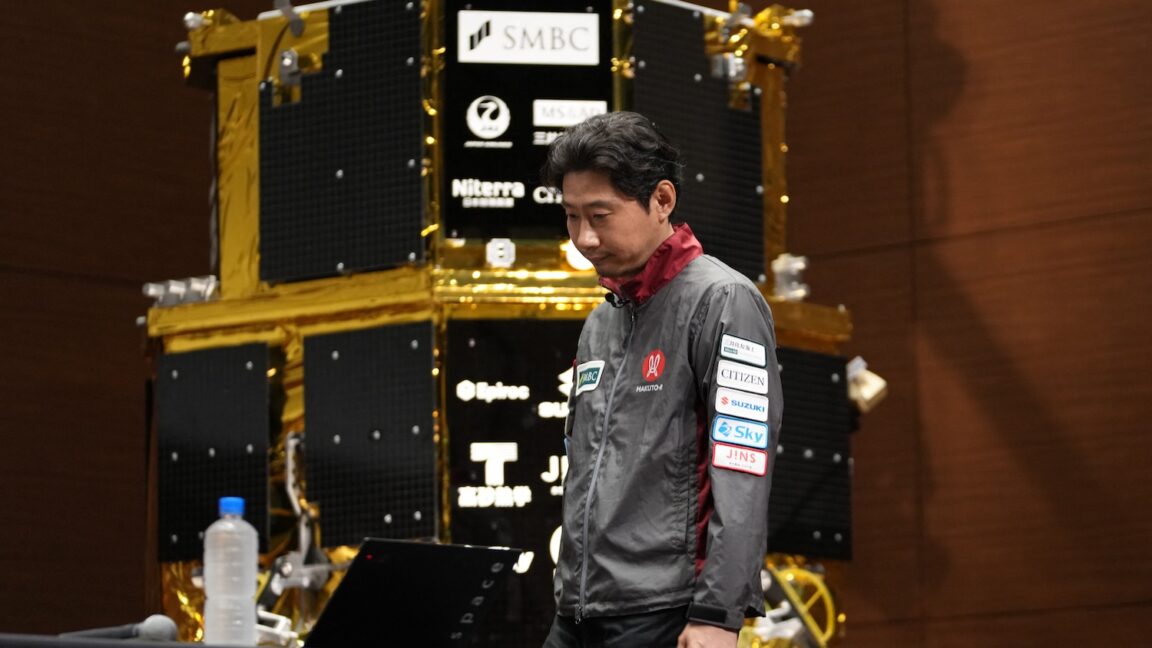- Get link
- X
- Other Apps
- Get link
- X
- Other Apps

Ispace's Lunar Dream Dashed: Resilience Lander Crashes on the Moon
In a setback for lunar exploration, the Japanese company ispace confirmed that its Resilience lunar lander crashed onto the Moon's surface on Thursday. This marks the second unsuccessful attempt by ispace to achieve a soft landing on the lunar surface.
The mission aimed to demonstrate technologies for future lunar resource utilization. The lander carried a small rover and several experiments designed to pave the way for mining and harvesting resources on the Moon.
The unfortunate incident occurred during the final descent phase. Ground control in Tokyo lost contact with the lander just moments before its anticipated touchdown in Mare Frigoris, also known as the Sea of Cold – a basaltic plain located in the Moon's northern hemisphere.
Takeshi Hakamada, the founder and CEO of ispace, expressed his disappointment, stating, "We wanted to make Mission 2 a success, but unfortunately we haven’t been able to land."
Ryo Ujiie, ispace's chief technology officer, provided some insight into the potential cause of the crash. According to the last data received from the Resilience lander, it was descending at an excessive speed from an altitude of approximately 630 feet (192 meters). “The deceleration was not enough. That was a fact,” Ujiie explained to reporters.
The company's subsequent press release pointed to a malfunction in the lander's laser rangefinder as a primary contributing factor. Here's a breakdown of the issue:
- The laser rangefinder is crucial for measuring the lander's altitude.
- It works by emitting light pulses and measuring the time it takes for the reflection to return.
- This time delay provides the lander's guidance system with accurate altitude data.
- However, on Thursday, the laser rangefinder experienced "delays in obtaining valid measurement values."
As a result, the lander couldn't properly gauge its distance from the lunar surface, leading to insufficient deceleration. ispace concluded that the Resilience lander likely experienced a "hard landing" – essentially, a crash – on the Moon.
Here is a summary of the key events:
- Loss of contact: Ground teams lost contact shortly before the planned landing.
- Excessive speed: Data indicated the lander was descending too quickly.
- Laser malfunction: The laser rangefinder experienced measurement delays.
- Hard landing: The company believes the lander crashed on the lunar surface.
While this mission didn't achieve its primary objective, the data collected during the descent will undoubtedly provide valuable insights for future lunar endeavors. The road to space exploration is paved with both successes and setbacks, and this experience will likely serve as a crucial learning opportunity for ispace as they continue to pursue their lunar ambitions. Space exploration is, after all, a challenging endeavor, and failures are often stepping stones to future triumphs.
Tags: ispace, Moon landing, lunar mission, Resilience lander, space exploration, Japan, Mare Frigoris, robotic lander, mission failure, lunar resources
Source: https://arstechnica.com/space/2025/06/a-japanese-lander-crashed-on-the-moon-after-losing-track-of-its-location/
Ispace
Japan
lunar mission
lunar resources
Mare Frigoris
mission failure
moon landing
Resilience lander
robotic lander
Space exploration
- Get link
- X
- Other Apps
Comments
Post a Comment